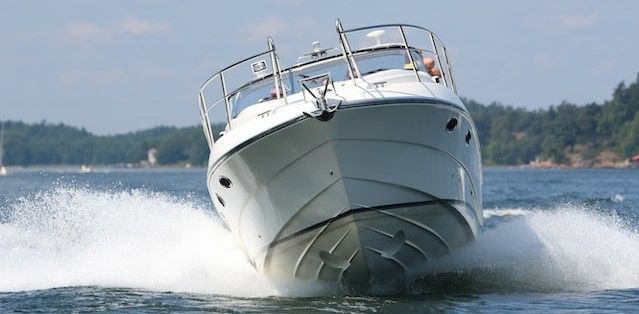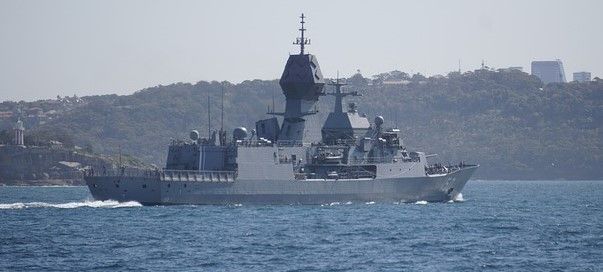Nanotechnology and the Navy
How military researchers are applying nanotechnology in the war at sea.

Nanomaterials will play a key role in the design and manufacture of both surface vessels and submarines.
Next-generation naval vessels, as well as land-based military hardware, will rely on the high-strength and light-weight properties inherent in nanomaterials. Nanotechnology can aid radar deflection (as deployed in stealth aircraft) and also nano-enabled anticorrosion and antifouling coatings.
Key elements of nanotechnology in sea vessels include:
Improved Speed and Manoeuvrability
Despite advances in the development of composite materials for small, high-performance vessels and pleasure craft (typically a sandwich design with a PVC core, carbon fibre, and vinyl laminate), larger ships are still made of steel.
This is due to the prohibitive cost, safety considerations, and complexity of ship building with composites.

However, alloys of nanoaluminium in aluminium and polymers provide low-weight, high-strength, robust structures to make vessels go faster and handle better in rough seas.

Technological advances in ship building mean that recently, the Swedish Navy built five Visby-class ships at the Saab Kockums shipyard using composite hulls. Each vessel measured 73m in length but was 50% lighter than equivalent-strength steel. This translates to both a higher top speed and better manoeuvrability and is a foretaste of how nanomaterial composites will influence ship design and performance.
Wear Resistant Coatings
Composites coatings with nano ceramic oxides of aluminium and titanium (Al2O3-TiO2) offer crack and chemical resistance (for example against salt corrosion). They are durable and can be modified to limit extreme temperature damage.
Nanomaterial-enhanced coatings are already proving their worth even beyond the navy’s high demands, and helps to protect a wide variety of structures, vehicles, and machinery. According to the industry journal Ship Technology, “Across all industries in the US, corrosion costs alone are estimated at more than $1 trillion a year.”

Anti-Fouling Coatings
Nanomaterial-enhanced coatings with copper nanoparticles can restrict bio-fouling from barnacles and other sea life.
As a recent report from the nanotechnology journal Azo-Nano notes, “[A study] coordinated by Spanish technology center IDONIAL, found numerous products under development by various companies that employed nanotechnology solutions to deal with corrosion and biofouling. These included nano additives like nano-ZnO, nano alumina, and nanosilica.”
EMI Shielding and Sonar Decoys
Carbon nanotube composites can be used to deflect sonar or to draw off incoming torpedoes by emitting copycat signals in underwater decoys. Nanomaterials can also influence electromagnetic properties and so can help misguide planes and drones fitted with Magnetic Anomaly Detectors.
Cloaking
A thin surface coatings of nanobubbles could potentially be deployed to function as a cloaking device on submarines.
Interestingly, the US did develop a vessel with cloaking capabilities. The Sea Shadow was an experimental design launched in 1993 which was able to avoid radar detection. However, in doing so it left a blank space in the ocean which enemy radar operators could easily detect as a ship. In effect, the Sea Shadow’s invisibility to radar actually made it visible and the project did not extend beyond prototype.

For this reason, most ‘stealth’ ships and planes only aim for very low visibility to radar to extend their range before detection.
Fire Retardancy
Fire has always been dangerous on ships and submarines, but could be better restricted with the application of composites containing nanoalumina silicates in a polymer matrix.
Fuel Efficiency
Additives using nanoparticles can help vessels travel further on less fuel. For example, nanotech-driven innovations are being used to develop fuel oils that have had the sulphur pre-separated on the molecular level. This can be achieved by engineering carbon nanotubes to work as adsorbents for the desulphurisation of fuels.

The civil marine sector has already gained from a number of technological developments brought about by advances in nanoscale research and development.
Given the innovative nature of war, it is a natural progression that the military adapt many of these advances. But more than that, nanotechnology is likely to provide the launch pad for next-generation war ships through the use of nanotechnology in electronics or even autonomous power generation equipment.
Photo credit: Robert Gunnerson on Unsplash, Mark Konig, Chinfo, Anne Nygard, & Red Charlie, Patrick from Pixabay

